Bristol Bears back to their best just in time with only four kicks in latest win
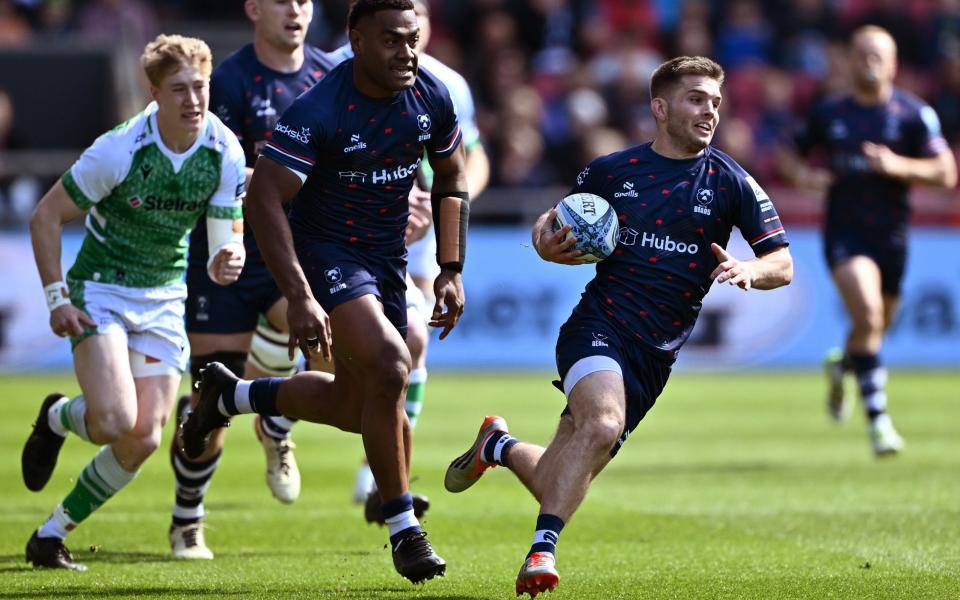
The past few years in the Premiership have reaffirmed the truism that, when it comes to winning matches in rugby union, there is more than one way to skin a cat. Back in 2022, as Steve Borthwick guided them to glory, Leicester Tigers leant on kick-pressure as a primary weapon. Their victory in the final inspired Saracens, that season’s runners-up, into a more expansive approach on the way to glory the following year.
Northampton Saints have been this term’s pre-eminent team thus far. They have a balanced template. Only Tigers (36 kicks for 1,023 metres per game) put boot to ball more often than their East Midlands rivals, who have averaged 33 kicks for 985 metres per 80 minutes, according to Stats Perform. One tends to forget how much Northampton kick, of course, because their attack, masterminded by Sam Vesty, is so prolific.
Pat Lam is renowned for intricate phase-play tied together by fluid passing. But Bristol Bears appeared to be moving away from that strategy. In the 2020-21 campaign, when they topped the regular season Premiership table, they registered just 19.7 kicks per 80 minutes. Against Tigers in October, they accumulated 45 kicks, following that up with 33 against Northampton and another 34 against Harlequins.
They won the first two of those matches and were close to going three from three. Trickier times followed before Bristol eked out a gutsy away win over Sale Sharks on January 5, kicking 39 times in the process. A fortnight later, Connacht beat them 27-10. While far from a kick-fest (Bristol, who lost Josh Caulfield to an early red card, only kicked seven times) that defeat would be a line in the sand. Owner Steve Lansdown implored Lam to go back to the future and to produce entertaining performances.
Four consecutive, comprehensive Premiership triumphs since have featured a total of 52 kicks – 15 against Bath, 17 against Saints, 16 against Gloucester and just four in Sunday’s 85-14 thrashing of Newcastle Falcons.
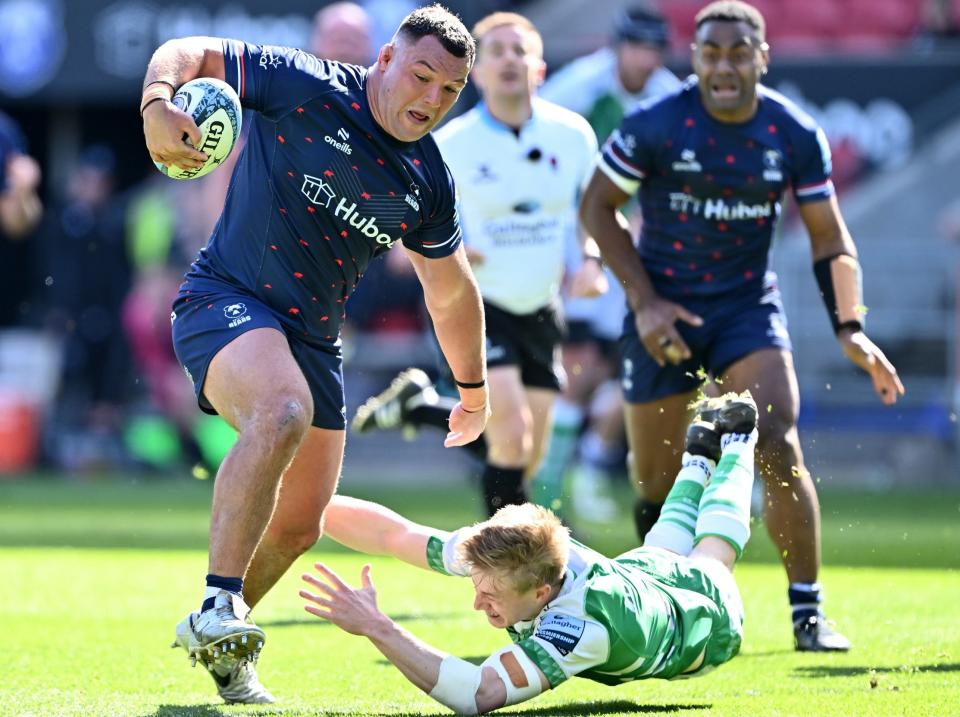
The latter was the second-lowest mark recorded by Stats Perform across 1,959 Premiership fixtures since the company started collecting such data at the beginning of the 2009-10 season. And before ‘it was only Newcastle’ is presented as a reason for Bears’ plan, the previous lowest total of kicks against Falcons this season was 23.
Afterwards, Lam explained his tactics: “I said to the boys before the game: ‘Don’t go out early today because I don’t want anyone cramping. We’re gonna run. Don’t waste five or 10 minutes in the warm-up, because we’ll need it later.’”
Addressing the sport’s wider landscape, Lam claimed that “kicking metres have dominated rugby headlines since the World Cup” and proposed that the game may have become fixated on that area. “It did, but I don’t regret it,” Lam said, acknowledging that Dave Alred’s time with the club as a short-term consultant coach improved Bristol and made them into “a stronger all-round team”. Recently, though, there has been a concerted effort to return to “fearless “attack.
“Dave Alred did a great job; he improved our kicking and our kicking structure, Lam added. “Before, when we used to kick, our chase wasn’t good. Our organisation was OK, but I now have a lot of faith that, when we need to kick, we have better structure and better kickers. [When kicking was a big part of training] what ended up happening, of course, which can be the case when you teach new skills, is that boys were breaking and kicking.
“Part of stripping it back is bringing it back to what’s on and not being afraid. There’s structure in that. It’s not just running the ball. People who really know rugby know that it’s not an accident who we pass the ball the ball to, who’s running certain lines, who’s dropping out and playing. People say ‘ooh, a line-break’ and it might look simple. It’s not.”
Between rounds one and 11 of Premiership action this season, Bristol averaged 30 kicks per game in open play. Since then, between rounds 12 and 15, they have averaged 13. The opening seconds of Sunday’s win set the tone. Bears gathered the kick-off through Magnus Bradbury and Harry Randall fizzed a pass into midfield. Watch AJ MacGinty changing direction to fade behind three flat forwards, scanning the defence as he goes:
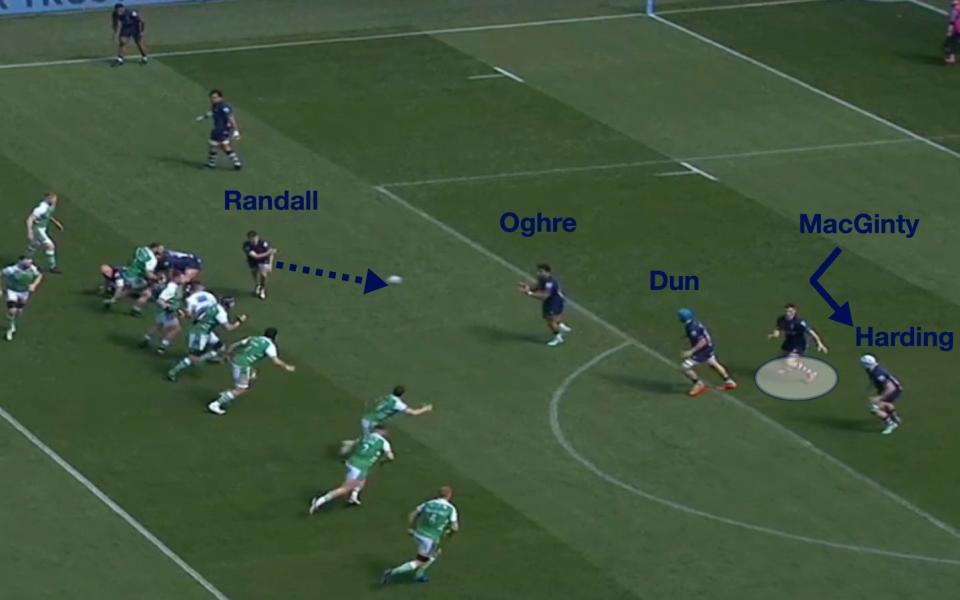
As it happens, Fitz Harding must dive to clutch a dipping pass:

Bristol stay patient, and move the ball back to the right. MacGinty and James Williams swing towards the far touchline in a second wave:
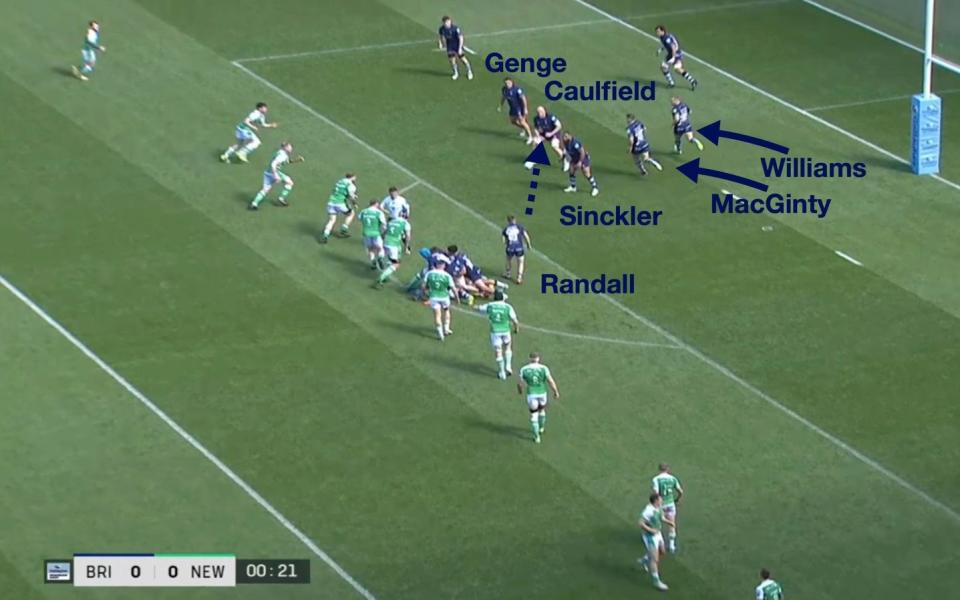
There is another fumble, which puts Bristol into an awkward position and Randall shapes to box-kick. MacGinty sells the option by pointing up-field…
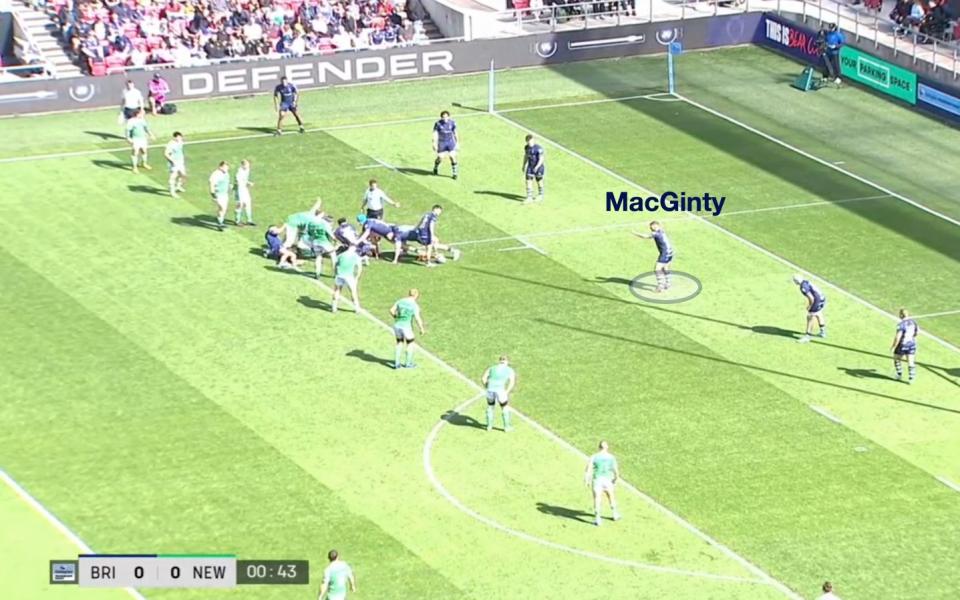
…but then changes direction to dart to his left. Harding and Williams are important as well. The former becomes first-receiver while the latter back-pedals slightly before cutting a short angle:
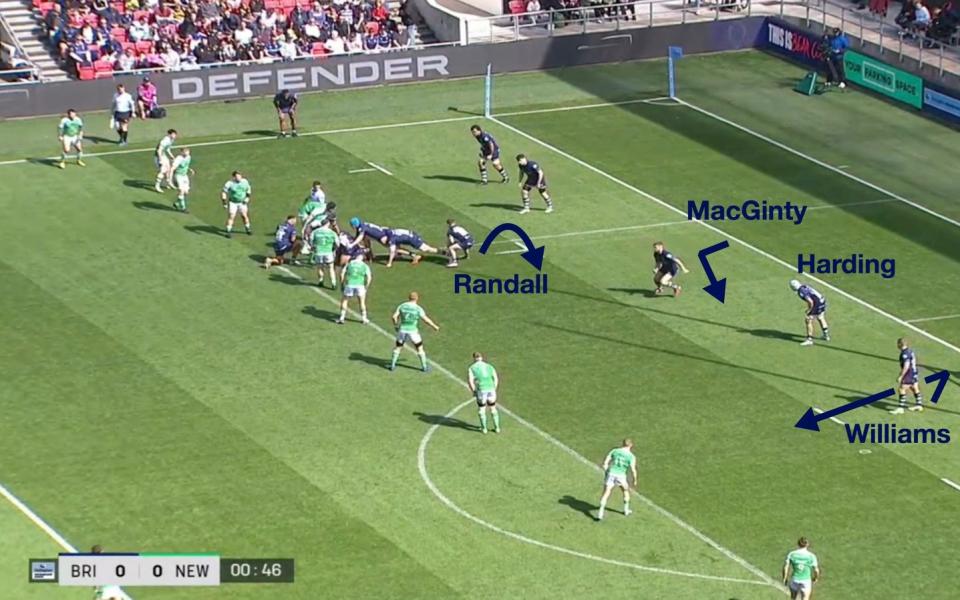
This creates a slice shape, allowing MacGinty to distribute from a deeper role. Suddenly, the field is opened up and Benhard Janse van Rensburg can impart width. Watch the subtle, off-the-ball movement of MacGinty and Williams here, which is fundamental to everything:

Max Malins gets a run down the near touchline and Bristol swing the ball back to the far flank, where Siva Naulago storms into space, scoring on the back of an exchange with the trailing Randall:
Bristol completed 305 passes in all at Ashton Gate, including 29 offloads, and racked up a club-record winning margin despite blowing several opportunities. Lam insisted that he reveres the influential actions “that don’t require talent” – clear-outs, support lines, positioning that draws away defenders – more than tries.
Continually threatening from restarts was the most obvious sign that the Bears have recovered their swagger and are committed to this style of play. The habit is also testament to how quickly they can adopt a multi-faceted attacking shape and adapt to one another.
Here, quite literally in the shadow of their own posts, MacGinty zips a pass across Kyle Sinckler to Ellis Genge. Newcastle have to respect Bradbury, who is on the right shoulder of his colleague, but Genge plays a deft pull-back. Williams loops and picks a gap. The attack fizzles out in broken field as Bradbury cannot quite readjust to gather a pass:

According to Stats Perform, Bristol have bagged eight tries this season from restarts, 22 drop-outs and goal-line drop-outs. No other side has scored more than four from those sources.
Clearly, balance is crucial and defences will be warier following the exhibition against Newcastle. Bristol’s trip to Leicester this weekend presents a stark clash of styles and Tommy Reffell, an elite jackaller, will be out to derail their continuity, which could bring more kicking.
Cynics might highlight that Bears have beaten weakened Bath and Northampton teams, plus Gloucester and Newcastle, in this current sequence. And yet, two more wins from the remaining three games should be enough to seal a semi-final.
Lam has quality everywhere, from a dynamic front row of Genge, Gabriel Oghre and Sinckler via Caulfield, Joe Batley and James Dun, among the league’s best locks this year, to mobile back-rowers. Gabriel Ibitoye has enjoyed the most consistent season of his career and Williams has broken through in midfield, joining forces with the excellent Janse van Rensburg. Max Malins, in his preferred position of full-back, knows his way around the knockouts, while Randall and MacGinty represent a balanced half-back pairing.
Only one of their players, Genge, played at all during the Six Nations, with Bradbury and Randall called up to the wider squads of Scotland and England, respectively. Freshness should not be an issue and synergy and cohesion will have been developed in training. As Lam noted, there is a positive atmosphere, too.
“Boys who have been here a long time have said: ‘We’re back’,” Lam smiled on Sunday. “The boys that are new have said: ‘I love this’. But it’s like anything. It’s fun when you’re winning.”
Most seasons, seemingly, a side rides late momentum and hijacks the top four. Bristol have impetus. Whether or not they hold on – and a showdown with Harlequins on May 18 looks delicious – their surge underscores the value of teams staying true to themselves.

